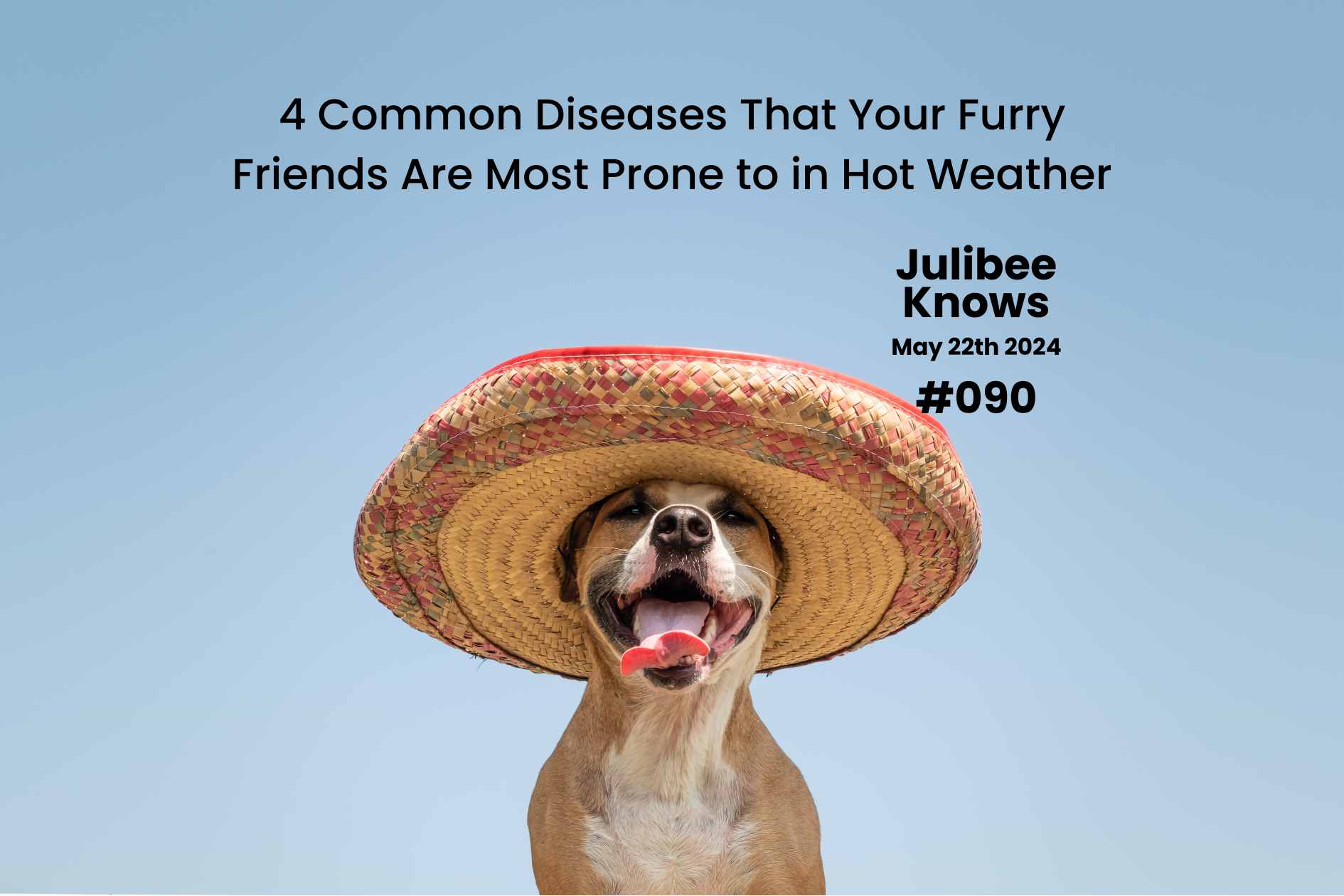
4 Common Diseases That Your Furry Friends Are Most Prone to in Hot Weather
Learn how to protect your furry friends from the dangers of summer heat, including heatstroke, paw pad burns, dehydration, and skin fold dermatitis. Discover essential tips for keeping your pets safe and comfortable during the...
Inside this Article:
As the summer season approaches, temperatures start to rise steadily. Both cats and dogs have a higher tolerance for cold than for hot environments. The normal body temperature of cats and dogs is higher than that of humans, ranging from 37.7 to 39.2 degrees Celsius.
As temperatures rise, furry friends find it difficult to efficiently expel excess heat from their bodies, making them highly susceptible to heatstroke. Besides heatstroke, there are several other diseases associated with high temperatures.

1. Skin Fold Dermatitis
Unlike humans who sweat profusely, cats and dogs do not sweat as much. Their sweat glands are only distributed in areas like the paw pads. They dissipate heat through respiration. As a result, furry friends do not develop heat rash like humans do.
However, some furry friends have naturally wrinkled skin, such as Shar-Peis and Bulldogs, while others may develop skin folds due to being overweight. These wrinkled areas of skin rub against each other, causing them to be relatively moist and isolated from air, making them prone to skin infections. Typical symptoms include itching and redness.
The treatment for this type of skin problem is quite simple: regularly clean the skin folds and use medications or medicated baths to inhibit the excessive growth of bacteria or fungi.
Especially in summer, it is even more important to keep these folds as dry as possible.
2. Paw Pad Burns
During the hot summer months, under direct sunlight, the temperature of surfaces like concrete, asphalt, and stone pavements can be extremely high, easily burning the paw pads of furry friends.
Since we wear shoes most of the time, we may not pay much attention to the temperature of the ground. It is recommended to avoid walking dogs during the hottest hours of summer and to minimize outdoor activities for cats.
A simple way to determine if the ground is too hot is to place your hand on the surface for 5 seconds. If it is too hot for you to bear, it will also burn your furry friend's paw pads. You can walk your dog in the morning or evening and choose dirt or grass paths.
Paw pad burns in furry friends can take a long time to heal and can be quite troublesome to care for, making them both time-consuming and labor-intensive.
3. Dehydration
Dogs can easily become dehydrated when they exercise vigorously in hot environments. Dehydration not only makes dogs feel uncomfortable but can also lead to other more serious health problems.
Therefore, when taking your dog out in the summer, it is best to bring a portable water bottle or bowl, and encourage your dog to drink some water after a short walk. When going on a road trip with your furry friends, be sure to keep the car air conditioning on and never leave your furry friends alone in the car, as the high temperatures inside the car can lead to tragedy.
During the summer, make sure there is plenty of drinking water available indoors, and it's even better to have some ice cubes on hand so that your furry friends can drink some ice water from time to time to cool down.
4. Heatstroke
It is normal for furry friends to pant heavily when playing outdoors in the summer, but if they are experiencing difficulty breathing, this could be a sign of heatstroke. Symptoms of heatstroke include:
- Excessive panting
- Excessive drooling
- Red gums
- Vomiting
- Diarrhea
- Lethargy
- Lack of coordination
- Collapse
If you notice any of these signs, seek immediate medical attention. You can wet your furry friend's fur with cool water and encourage them to drink as much water as possible. Then, take them to the vet.
Heatstroke can be a medical emergency, and if not treated promptly, it can easily be fatal.

5. Additional Tips
-
When walking your dog in the summer, let your dog dictate the pace and amount of exercise. Take breaks and offer water after short walks.
-
When it's hot outside, it's recommended to keep the air conditioning on indoors and avoid letting cats go outside. While cats can usually find cool places to rest outdoors, it can be difficult for them to find clean, fresh water.
-
Some dog breeds are more heat-sensitive than others, such as flat-faced breeds like Bulldogs, Boxers, etc. In addition, older dogs, puppies, obese dogs, and breeds with thick coats are also more heat-sensitive.


213 comments
IwlTfbRoxVnP
kRijBOQVAIh
JWHMxXIupESyGvs
jZgakEXJcAGbpn
XaPwnLltJyMZIpiN
UzavEreljbZqXPm